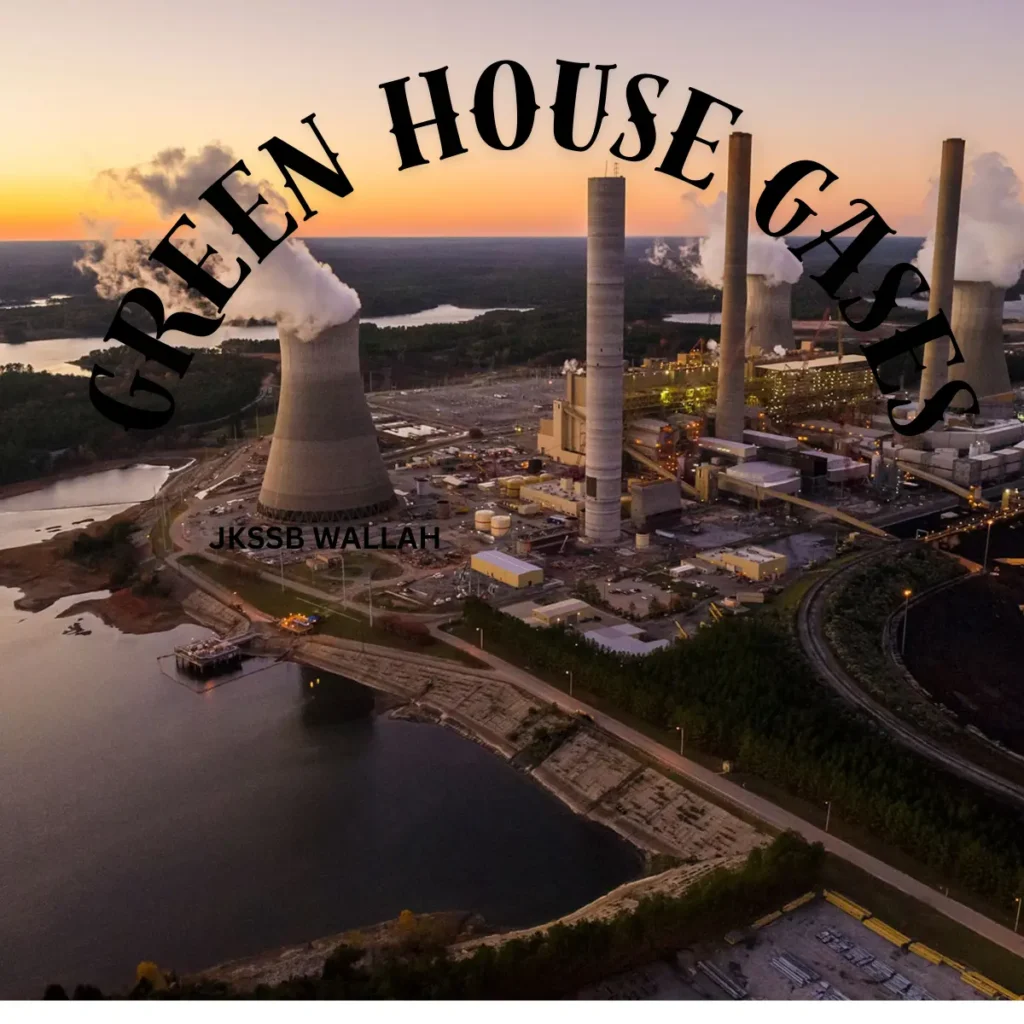1. The greenhouse effect is mainly caused by which gases?
1. Oxygen and Nitrogen
2. Hydrogen and Helium
3. Carbon dioxide, Methane, Nitrous oxide
4. Argon and Neon
These gases trap heat in the Earth’s atmosphere, leading to global warming.
2. Which gas is the largest contributor to the greenhouse effect?
1. Ozone
2. Carbon dioxide
3. Nitrous oxide
4. Methane
CO₂ is the largest contributor to the enhanced greenhouse effect from human activities.
3. The natural greenhouse effect is important because it:
1. Cools the Earth’s surface
2. Makes Earth habitable by trapping heat
3. Destroys ozone layer
4. Produces oxygen
Without it, Earth’s temperature would be around –18°C, too cold for life.
4. The enhanced greenhouse effect is caused by:
1. Decrease in industrialization
2. Human activities increasing greenhouse gases
3. Increased volcanic eruptions only
4. Natural seasonal changes
Human activities like burning fossil fuels and deforestation increase greenhouse gases.
5. Which greenhouse gas is released mainly by rice cultivation and livestock?
1. CO₂
2. CH₄ (Methane)
3. N₂O
4. O₃
Methane is released from paddy fields, landfills, and digestive systems of cattle.
6. Which of the following gases has the highest global warming potential (GWP)?
1. CO₂
2. Methane
3. Nitrous oxide
4. CFCs
CFCs trap thousands of times more heat than CO₂.
7. The major source of CO₂ in the atmosphere is:
1. Photosynthesis
2. Burning of fossil fuels
3. Ocean absorption
4. Soil bacteria
Power plants, vehicles, and industries emit most CO₂.
8. Which greenhouse gas is also responsible for ozone layer depletion?
1. Nitrous oxide
2. Carbon dioxide
3. Methane
4. CFCs
CFCs act as greenhouse gases and destroy stratospheric ozone.
9. The “greenhouse” in greenhouse effect refers to:
1. Forests
2. Glass house for plants
3. Trapping of heat like glass in a greenhouse
4. Green colored gases
The Earth’s atmosphere acts like glass, letting sunlight in but trapping heat.
10. Which of the following is a natural greenhouse gas?
1. CO₂
2. Methane
3. Water vapor
4. All of the above
All these gases occur naturally but human activities increase their concentration.
11. Which sector is the largest contributor to methane emissions?
1. Transportation
2. Agriculture
3. Cement industry
4. Mining
Agriculture (livestock farming and rice paddies) releases the highest amount of methane.
12. Which gas remains in the atmosphere for the longest time?
1. CO₂
2. Methane
3. Nitrous oxide
4. Water vapor
CO₂ can persist in the atmosphere for hundreds to thousands of years.
13. Which gas is also called laughing gas and is a greenhouse gas?
1. Methane
2. Nitrous oxide
3. Ozone
4. Carbon dioxide
Nitrous oxide (N₂O) is known as laughing gas and is also a potent greenhouse gas.
14. The greenhouse effect leads directly to:
1. Acid rain
2. Global warming
3. Ozone formation
4. Nuclear pollution
The greenhouse effect traps heat, raising Earth’s surface temperature → global warming.
15. Which gas is not a greenhouse gas?
1. Carbon dioxide
2. Oxygen
3. Methane
4. Ozone
Oxygen (O₂) does not absorb infrared radiation and is not a greenhouse gas.
16. The Kyoto Protocol (1997) was aimed at reducing:
1. Deforestation
2. Greenhouse gas emissions
3. Water pollution
4. Noise pollution
The Kyoto Protocol is an international treaty to reduce greenhouse gas emissions.
17. Which gas has the shortest lifespan in the atmosphere?
1. Water vapor
2. Carbon dioxide
3. Methane
4. Nitrous oxide
Water vapor cycles quickly through evaporation and condensation.
18. The main consequence of enhanced greenhouse effect is:
1. More rainfall only
2. Cooling of Earth
3. Global climate change
4. Increase in biodiversity
Enhanced greenhouse effect leads to global warming, glacier melting, sea-level rise, and extreme weather.
19. Which of the following is an artificial greenhouse gas not found naturally?
1. CO₂
2. CH₄
3. N₂O
4. CFCs
CFCs are man-made chemicals used in refrigeration and aerosols, and also potent greenhouse gases.
20. What percentage of Earth’s greenhouse effect is due to water vapor?
1. 5–10%
2. 15–25%
3. 50–60%
4. 70–80%
Water vapor is the dominant natural greenhouse gas, responsible for around 70–80% of the natural greenhouse effect.


Nice initiative brother
Keep it up
Do provide chapter wise mcq for all subjects